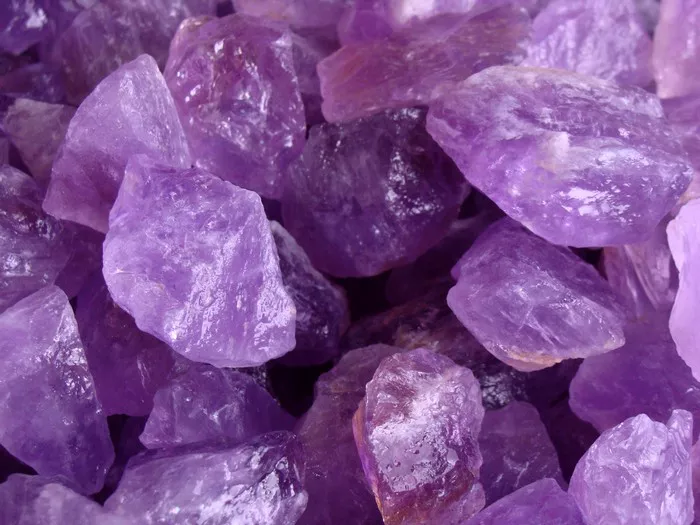Amethyst, with its mesmerizing hues ranging from delicate lilacs to deep purples, has captivated humanity for centuries. However, what happens when this beloved gemstone undergoes an unexpected transformation, changing its color? The phenomenon of amethyst fadation can be perplexing and concerning for gem enthusiasts and jewelers alike. In this article, we delve into the intricacies of why and when amethyst fade and explore strategies to prevent this fadation.
Amethyst: A Gem of Elegance and Mystery
Amethyst, a variety of quartz, derives its name from the ancient Greek word “amethystos,” meaning “not intoxicated.” Legend has it that wearing amethyst prevents drunkenness, making it a popular choice among ancient Greeks and Romans. Today, it is prized for its beauty and metaphysical properties, believed to promote calmness and clarity of mind.
The characteristic purple color of amethyst is attributed to the presence of iron impurities within the crystal lattice. The intensity of the purple hue can vary depending on factors such as the concentration of iron and the presence of other trace elements.
When Does Amethyst Fade?
Amethyst can undergo color changes under certain conditions, leading to alterations in its appearance. These changes may be subtle or dramatic, ranging from a shift in hue to a complete transformation of color. Understanding the factors that contribute to these alterations is crucial for gemstone enthusiasts and collectors.
One of the primary causes of color change in amethyst is exposure to heat or radiation. Heat treatment, commonly employed in the gemstone industry to enhance color or clarity, can inadvertently alter the hue of amethyst if not conducted with caution. Similarly, exposure to radiation, either natural or artificial, can induce changes in the crystal structure of amethyst, resulting in alterations in color.
Another factor contributing to color change in amethyst is prolonged exposure to sunlight or other sources of ultraviolet (UV) radiation. Over time, UV radiation can cause fading or bleaching of the purple color, leading to a paler or even colorless appearance. This phenomenon is particularly prevalent in amethyst jewelry worn frequently outdoors or displayed in areas exposed to sunlight.
Why Does Amethyst Fade?
The mechanisms underlying color change in amethyst are multifaceted and influenced by various factors, including the presence of impurities, crystal structure, and environmental conditions. Heat and radiation can alter the oxidation state of iron impurities within the crystal lattice, thereby affecting the absorption and reflection of light wavelengths responsible for the purple color.
Additionally, exposure to UV radiation can initiate photochemical reactions within the gemstone, leading to the breakdown of pigments responsible for the purple hue. This process, known as photodegradation, gradually diminishes the intensity of the color, resulting in a faded appearance over time.
Furthermore, the presence of trace elements such as aluminum and manganese can interact with the iron impurities in amethyst, influencing the coloration process. Changes in environmental factors, such as temperature and humidity, can exacerbate these interactions, accelerating the rate of color change in the gemstone.
Preventive Measures
While some color changes in amethyst may be inevitable due to natural processes or environmental factors, there are steps that can be taken to minimize the risk and preserve the gemstone’s original beauty.
Avoid Excessive Heat Exposure: When handling amethyst jewelry or gemstones, it is essential to avoid exposure to high temperatures, as heat can alter the color and clarity of the stone. Store amethyst jewelry in a cool, dry place away from direct sunlight and sources of heat, such as radiators or ovens.
Limit Exposure to Radiation: Minimize exposure to radiation sources, including X-rays and radioactive materials, which can induce color changes in amethyst. Exercise caution when undergoing gemstone treatments involving radiation, and ensure that reputable and experienced professionals perform such procedures.
Protect from UV Radiation: Shield amethyst jewelry from prolonged exposure to sunlight and UV radiation by storing it in a jewelry box or pouch when not in use. When wearing amethyst jewelry outdoors, consider applying sunscreen to protect both the gemstone and the skin from UV damage.
Regular Maintenance: Clean amethyst jewelry regularly using mild soap and warm water, gently scrubbing with a soft brush to remove dirt and debris. Avoid using harsh chemicals or ultrasonic cleaners, as these may damage the gemstone or accelerate color fading.
Rotate Displayed Gemstones: If showcasing amethyst specimens or jewelry in a display case or exhibition, periodically rotate the items to minimize prolonged exposure to light and environmental factors. Consider using UV-filtering glass or display cases to reduce the impact of sunlight on the gemstones.
Conclusion
Amethyst, with its enchanting purple hues, is a gemstone cherished for its beauty and symbolism. However, the phenomenon of amethyst fadation can pose challenges for gemstone enthusiasts and collectors. By understanding the factors contributing to fadation and implementing preventive measures, it is possible to preserve the integrity and vibrancy of amethyst for generations to come. Through careful handling, storage, and maintenance, we can ensure that this captivating gemstone continues to captivate and inspire for centuries to come.


